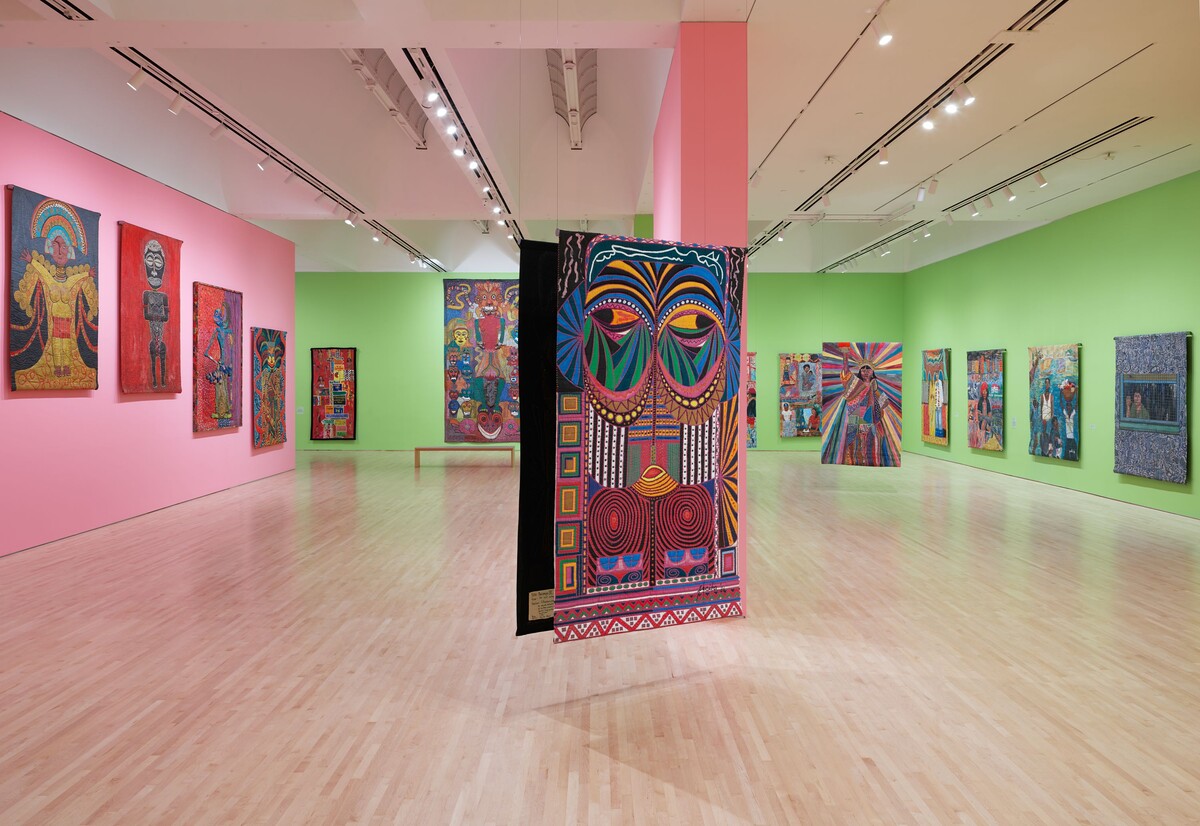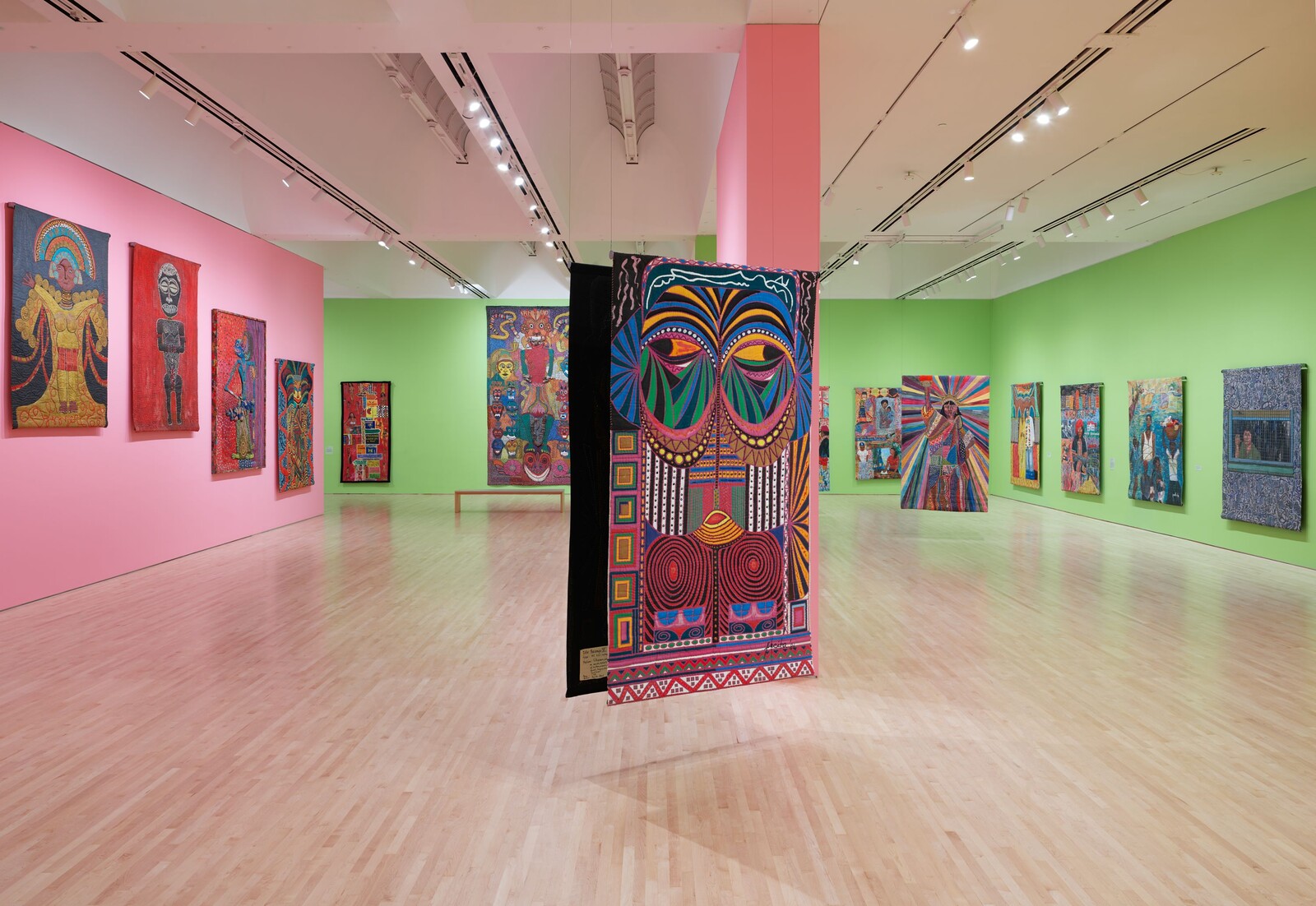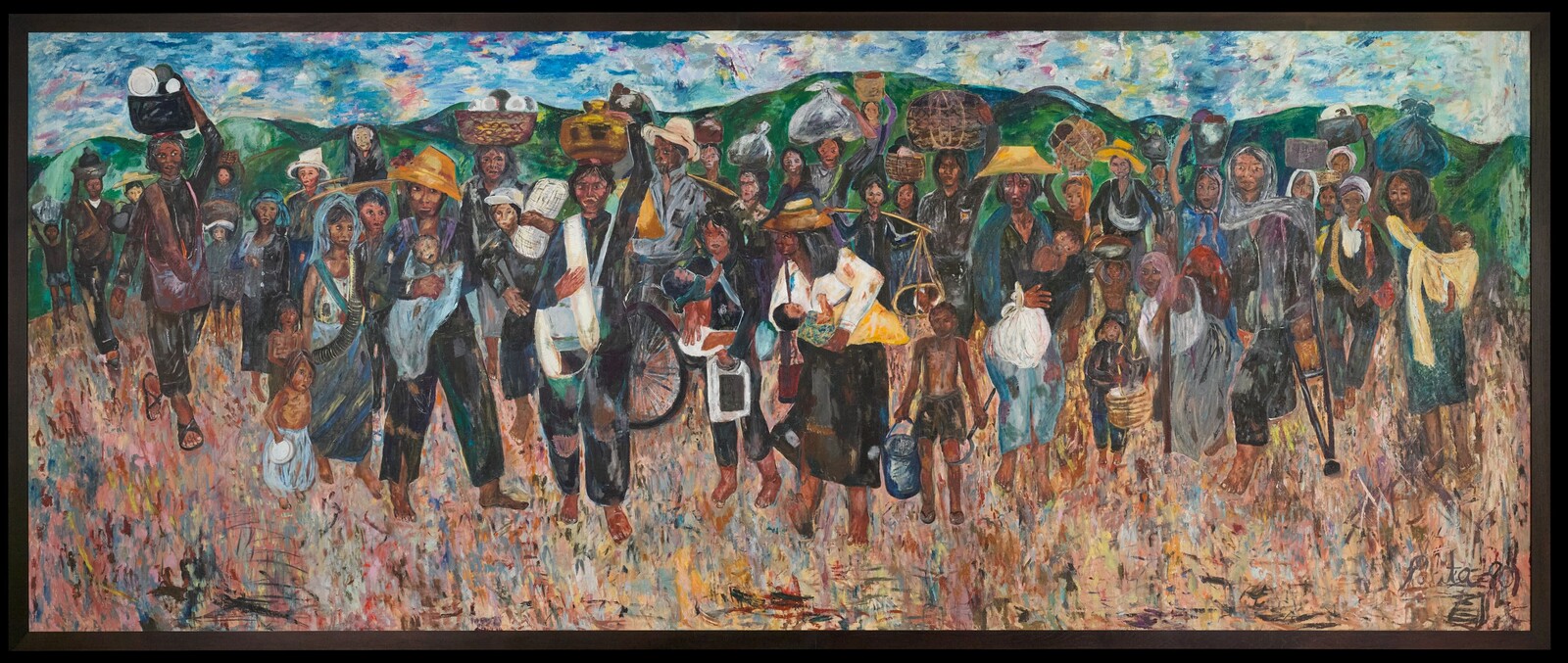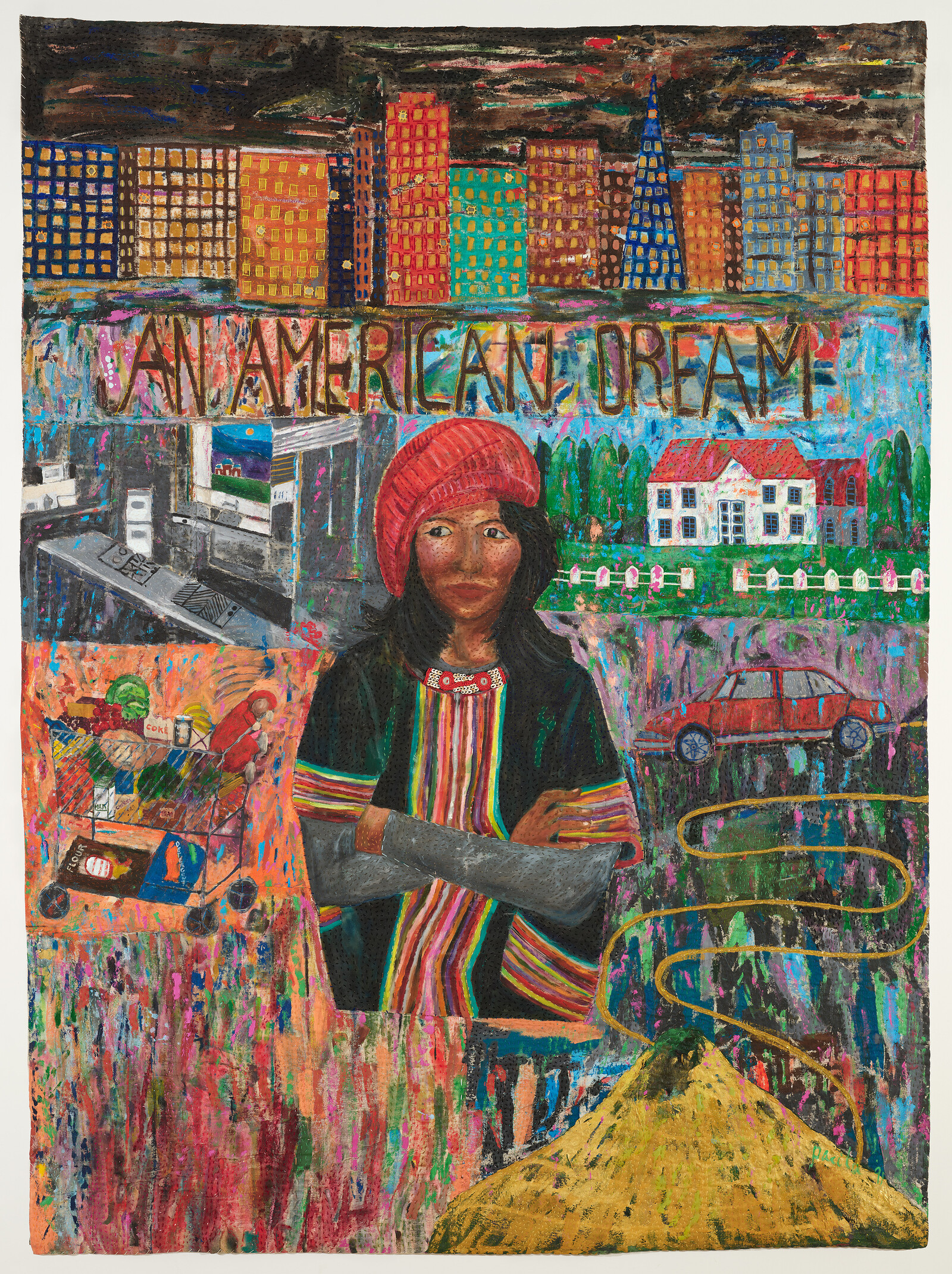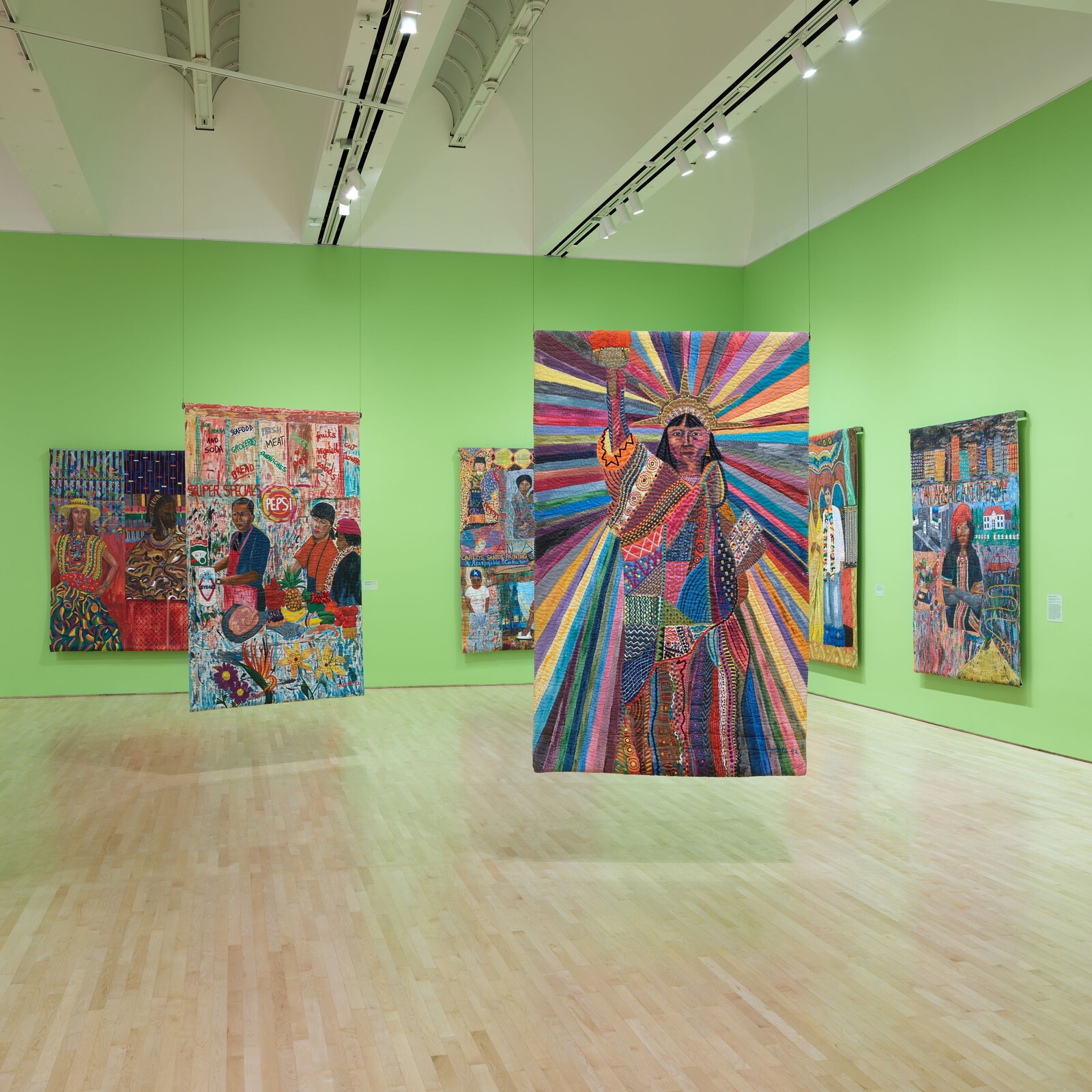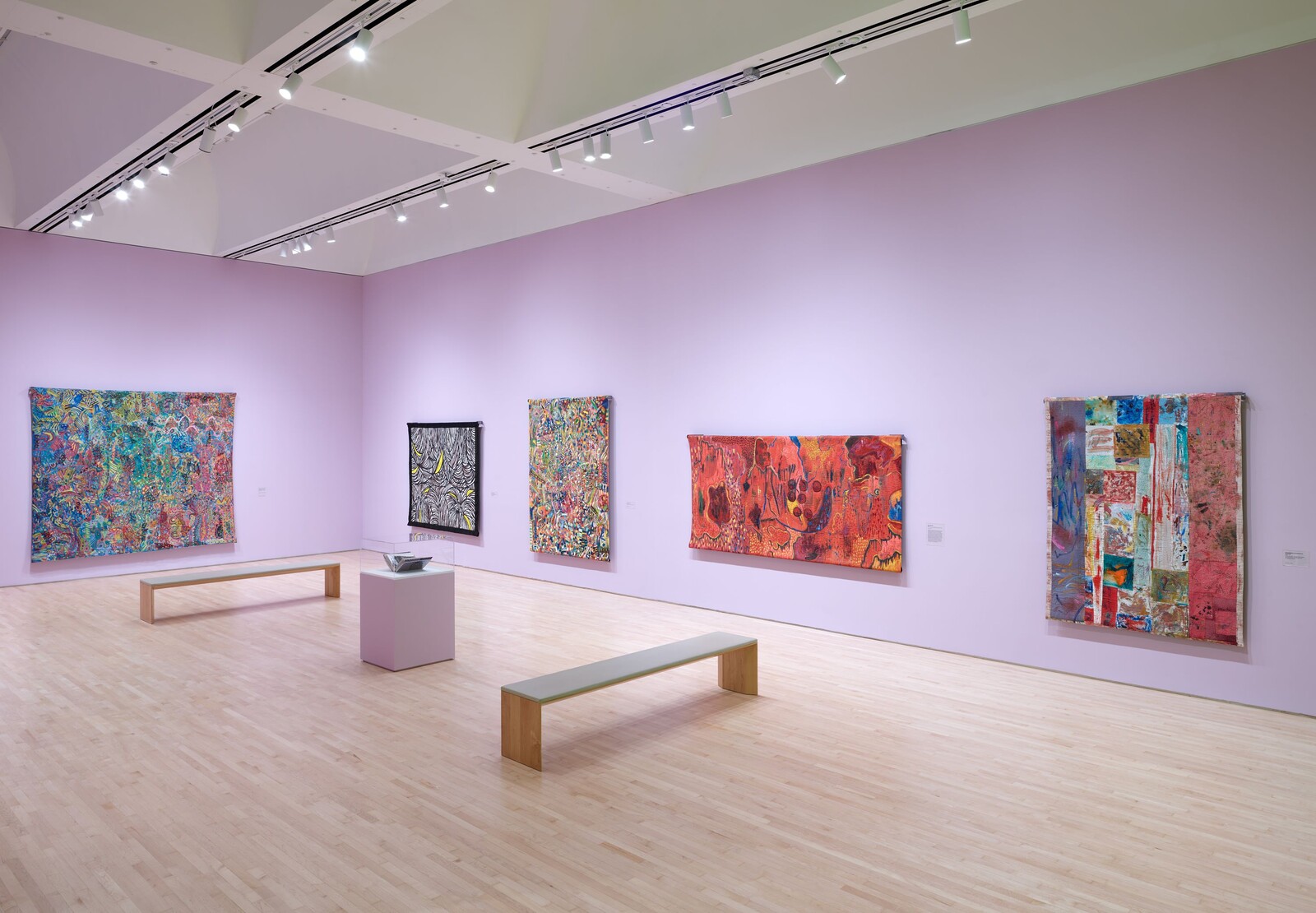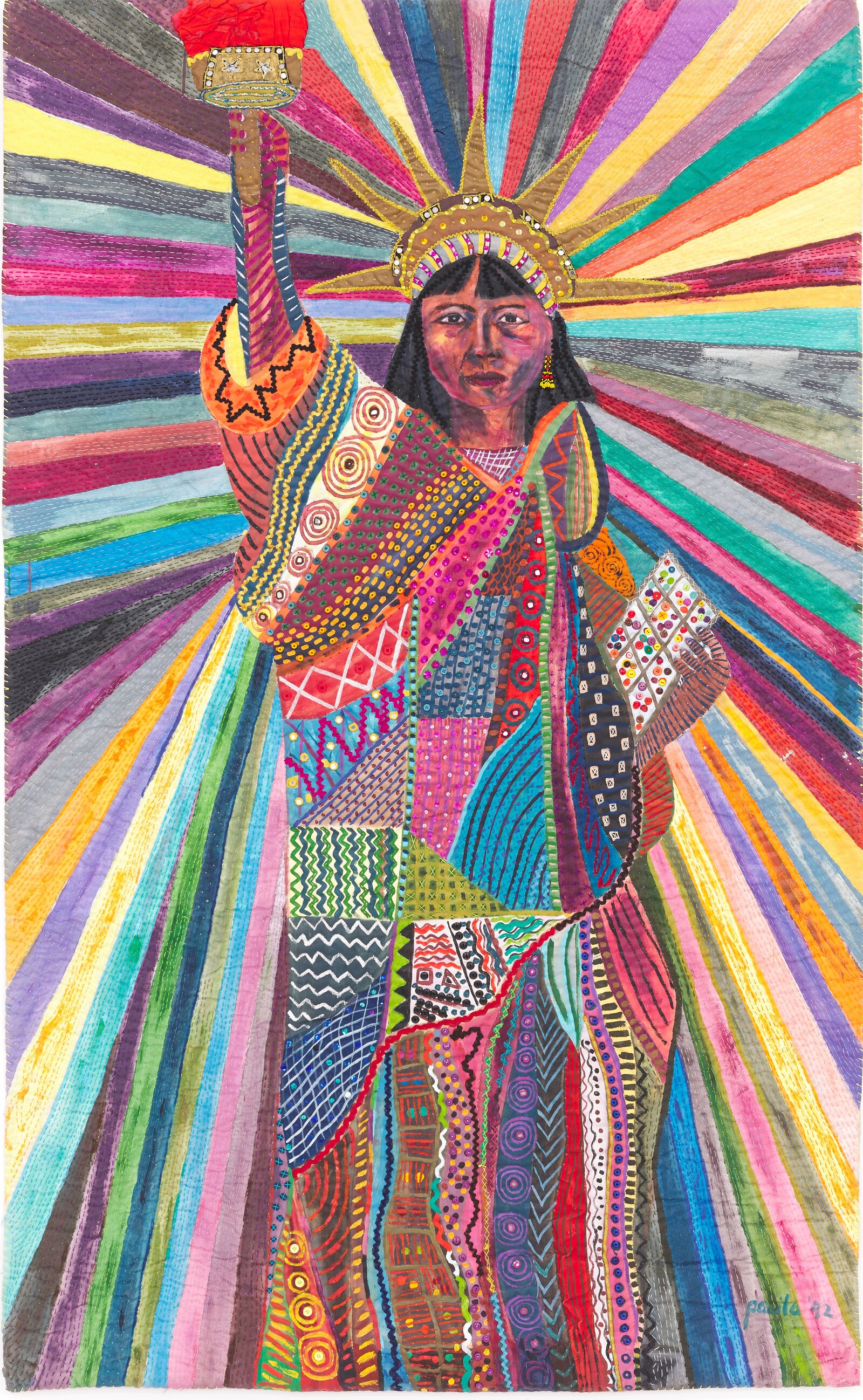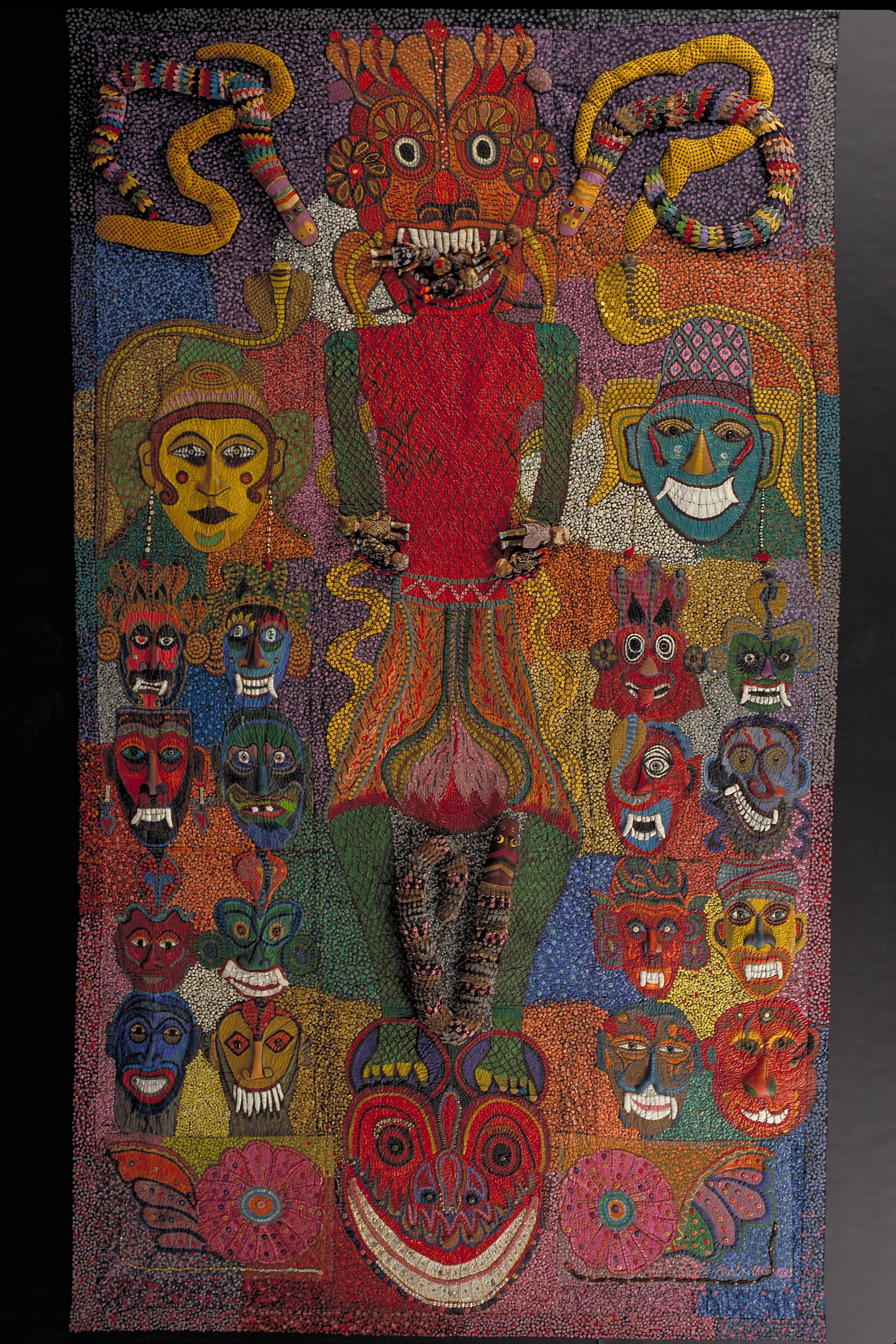To discuss the life of Pacita Abad is to enumerate the diverse places to which she traveled (some sixty countries across six continents), her expansive artistic output (nearly 5000 large-scale works), and the litany of materials and techniques she applied to the surfaces of her signature stuffed-and-quilted canvases, or trapuntos (sequins, beads, batik prints, and phulkari embroidery, to name just a few). Over a thirty-two-year career—she died of cancer in Singapore in 2004—Abad sidestepped hierarchies between craft and high art and unraveled received notions of the local, national, and global, pursuing instead a vibrant eclecticism that was often at odds with the dominant artistic movements of her time.
The retrospective at SFMOMA—arriving from the Walker Art Center before stops at New York’s MoMA PS1 and the Art Gallery of Ontario in Toronto—follows Abad’s artistic career as it was shaped by global postwar politics from the aftermath of national decolonization movements in Asia and Africa in the 1960s, through the humanitarianism of the 1970s and ’80s, and the heyday of multiculturalism in the US in the 1990s and early 2000s. In this, Abad’s trapuntos in particular function as what the curator Shabbir Hussain Mustafa has aptly termed an “archive of the Third World.”1 Here, a tight selection of forty works across five discrete series, with a focus on the paintings and trapuntos produced between the late 1970s and early ’90s, furnishes the idea of Abad as a Third World artist in the most spirited notion of a term that largely passed out of use with the end of the Cold War. Never content to be a passive witness to the diverse Indigenous crafts and artistic forms she encountered during her travels, Abad actively sought to document, reinterpret, and incorporate eclectic visual forms within her kaleidoscopic practice while simultaneously honoring and preserving their unique differences.
The San Francisco exhibition is in many ways a homecoming, even if that term that seems at odds with Abad’s peripatetic lifestyle and practice. Born to a large, politically active family in 1946 in Batanes, the northernmost island of the Philippine archipelago—where Abad’s father, mother, and brother would each serve in the government opposition to the long, largely dictatorial, and kleptocratic regime of President Ferdinand Marcos (1965–86)—she was raised between her home village and Manila, where she became active in student politics. In the crucial election year of 1969, the walls of the Abad family compound were riddled with bullets as part of an intimidation campaign launched by acolytes of Marcos, who had secured re-election through a policy known colloquially as the “three Gs”—guns, goons, and gold. In 1985, as resistance to the Marcos regime gathered, Abad would begin her massive trapunto Marcos and His Cronies (1985–95), which depicted the titular figures as demonic forms derived from Sinhalese masks used during traditional healing rituals in Sri Lanka. The embellished surface of this gargantuan work, which spans the height of a gallery wall at SFMOMA, is rife with sequins and beads, but also dangles with plastic dolls representing the Filipino citizens doomed to be devoured by the Marcos regime—establishing the work as both a playful and sobering critique of political authority.
In 1970, concerned about her safety and chafing against the stifling environment of Manila, Abad headed to Madrid to continue her law studies, stopping with an aunt in San Francisco during an extended layover. Enthralled by the city’s countercultural politics and her newfound freedom, Abad decided to stay in the city, enrolling in a master’s degree in history and supporting herself through odd jobs as an administrative assistant, typist, and seamstress in the Mission District, where her proximity to working class Latin American and Southeast Asian immigrants engendered a new political consciousness—one that had been set forth between 1968 and ’69 by a coalition of university students at San Francisco State and Berkeley. Dubbing themselves the Third World Liberation Front, the group seized upon the spirit of ’68 to successfully secure the establishment of ethnic studies departments at their respective universities. Abad’s fluid entrée within this activist milieu led her to meet and marry a Stanford student named Jack Garrity, whose work as a development economist would lead the couple around the world, first in a whirlwind trip from Turkey to the Philippines via Nepal, Pakistan and Bangladesh in 1973, where Abad’s encounter with Nepalese thangkas and Bengali kantha stitching prompted the development of her trapuntos later that decade, works which she could easily roll up and carry with her from locale to locale. The humanitarian crowd and relief efforts with which Abad was involved would play a decisive role in her practice, as indicated by the paintings from the “Social Realism Journeys” and “Cambodian Refugee” series (1979–80) shown here, including the monumental oil painting 1980 Flight to Freedom, based on a photograph published in the Bangkok Post that depicted Cambodian refugees carrying their sundry belongings.
In the 1990s, Abad veered away from her earlier documentary aesthetics toward looser slice-of-life collages in her “Immigrant Experience” series. We see her creative impulses at full force here, as she reconstitutes earlier figures into colorful mixed-media assemblages. For instance, the central figure in If My Friends Could See Me Now (1991) is grafted directly from the 1980 portrait of Than Lo, part of the “Cambodian Refugee” series, in effect mirroring the jarring experience of assimilating into US culture from poverty and political displacement. The 1993 work Cross-Cultural Dressing (Julia, Amina, Maya, and Sammy) is a trapunto wherein three of the titular figures are garbed in traditional clothing and beadwork appropriate to African, Asian, and Latin American, and Asian cultures, while the final figure is festooned with the names of American brands such as Levi’s and L.L. Bean, evincing the totalizing effects of globalization and its attendant culture of consumption. In it, we see Abad’s proleptic metabolization of the contemporary politics of multiculturalism, one famously decreed by Charles Taylor as a “politics of recognition.”2
Abad’s works from this period, from the resplendent L.A. Liberty (1992), hung beautifully here so that its many colored stitches are on full display, to the “Masks from Six Continents” series (1990–93) evince that her intent was not merely to “recognize” the peoples comprising the majority of the world’s population. It was instead to demonstrate that her art and her politics began from the promise of what was once known as the Third World as an expanding repository of possibility. Where much recent contemporary art has looked back to the Third World project with misty-eyed nostalgia, this retrospective (and the hefty, invaluable catalogue accompanying it) places its politics and aesthetics squarely within an ongoing and dynamic tradition.
This was related by Pacita Abad’s nephew, Pio Abad, in a lecture of the same name at UC Berkeley on October 17, 2023.
Charles Taylor, “The Politics of Recognition,” in Multiculturalism, ed. Amy Gutmann. (Princeton: Princeton University Press, 1995), 25-74.
